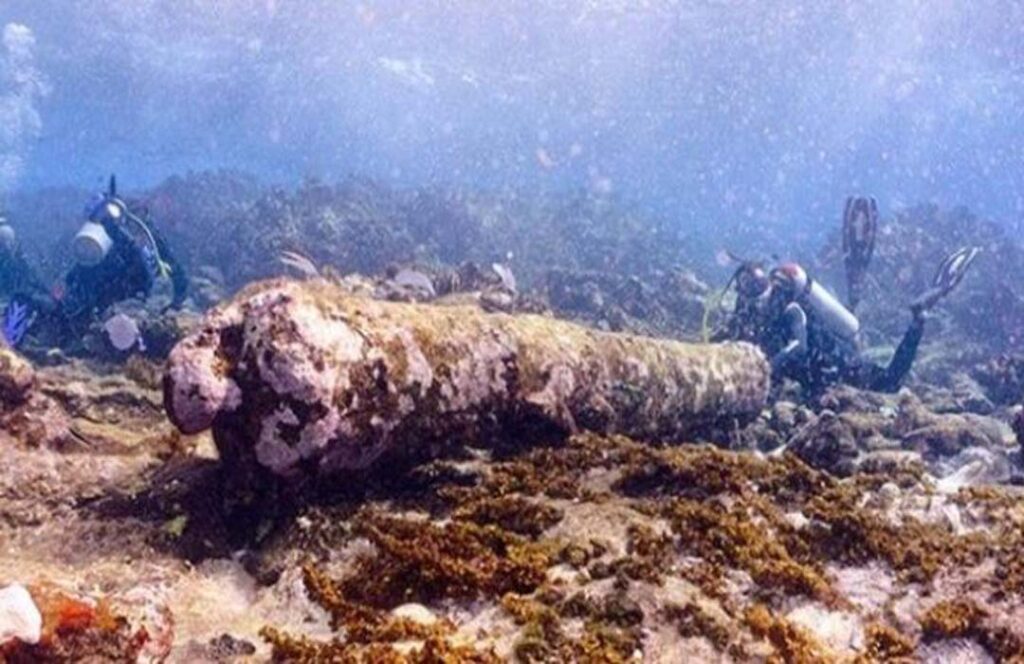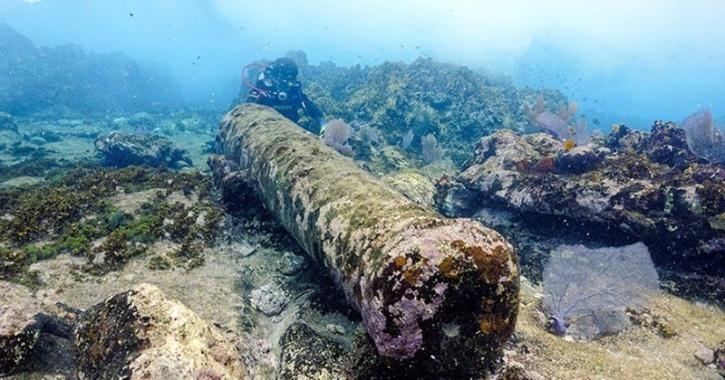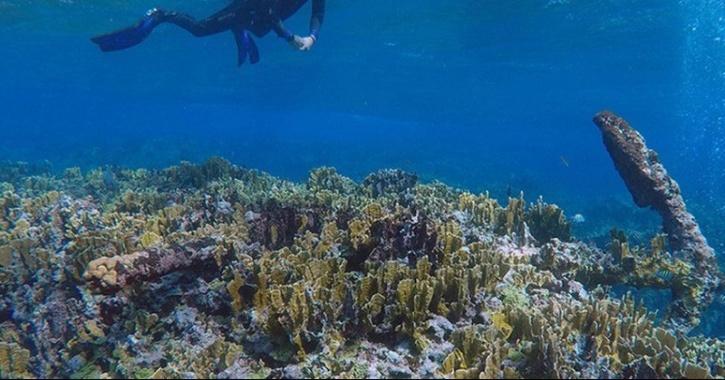Archaeologists Found More Than 200-year-old Shipwreck In Mexico’s Caribbean
A fisherman discovered a coral-coated shipwreck off the coast of Mexico that has laid hidden beneath the surface for over 200 years.

The wreck is named after Manuel Polanco, the man who discovered it, and sits in a watery grave just 21 miles from Majahual on Mexico’s Caribbean coast.
Archaeologists dated the wooden remains to the 18th or 19th century and although it is degraded, metal parts, iron ingots, the anchor and an eight-foot cannon are still intact.
The team believes the vessel sank after hitting the Chinchorro Bank, which was known for centuries as ‘ Nightmare reef ‘ or ‘Sleep-robbing reef’ due to the dangers it posed to sailors.
Researchers from Mexico’s National Institute of Anthropology and History (INAH) found the shipwreck after receiving a tip from Polanco who spotted it while diving in the waters.
‘The fishermen are the ones who know Chinchorro best since they navigate it daily to earn their living, diving the Caribbean waters to find fish, lobsters or conch, that they sell in Mahahual or Xcalak, and often they happen to find submerged archaeological contexts,’ INAH shared in a press release.
‘Manuel Polanco is an example of this, because although he is now retired from diving, in the ’60s and ’70s, he found the remains of various shipwrecks, including two of the most iconic in Banco Chinchorro: ’40 Cañones’ and ‘The Angel’.’

Polanco alerted archaeologists about the wreck in the 1990s, but experts have only made the first dives to inspect it in the past two months.
Unfortunately, Polanco is now in his golden years and was unable to accompany the researchers to inspect the wooden remains.
When the team dove to the depths where the ship laid, they found the organic material had degraded over the centuries.
Laura Carrillo Márquez, SAS researcher and head of the Banco Chinchorro Project, said: ‘It lies directly on the reef barrier where the ocean current is strong.’ ‘Only the solid elements remain, encrusted into the reef.’
She noted all that remained were the pig iron ingots that were used as ballast, some tubes, a cannon approximately eight feet long and an anchor.
Because the anchor was ‘active’, Márquez believes that the crew saw the reef up ahead and hoped to slow down the boat before crashing.

However, the anchor was unable to stop the vessel and it collided with the ‘Nightmare reef.’
‘Although some of the vestiges seem to indicate a British affiliation, the INAH researcher clarifies that this hypothesis must be yet corroborated or discarded, through analyses that will be meticulously done, taking care of the natural environment of the site,’ Márquez explained.
